Stablecoins have become a fundamental part of the cryptocurrency ecosystem, serving as a bridge between digital assets and traditional finance. They aim to provide stability by being pegged to fiat currencies—most commonly the U.S. dollar—reducing volatility and enabling efficient transactions in the blockchain space. Whether used for trading, remittances, or decentralized finance (DeFi) applications, stablecoins are essential for liquidity and security. Here’s an in-depth look at the top five stablecoins by market capitalization and their roles in the broader financial landscape.
1. Tether (USDT) – The Most Dominant Stablecoin
- Price: $1.00
- Market Cap: $152.8B
Tether (USDT) is the largest stablecoin by market capitalization, widely used across crypto exchanges, payment networks, and institutional finance. Established in 2014, Tether was designed to provide a digital asset that maintains parity with the U.S. dollar, ensuring stability in volatile markets.
USDT is backed by reserves consisting of cash, cash equivalents, and other assets such as commercial paper, secured loans, and government bonds. Despite its massive adoption, Tether has faced scrutiny regarding its transparency and reserve holdings. Regulatory concerns about whether USDT’s backing is sufficiently audited continue to be a topic of discussion. Nevertheless, its high liquidity and deep integration with the crypto market make it the go-to stablecoin for traders and investors.
2. USD Coin (USDC) – A Transparent Alternative
- Price: $0.9998
- Market Cap: $61.51B
USD Coin (USDC) was launched in 2018 by Circle in partnership with Coinbase, aiming to provide a stablecoin with full transparency and regulatory compliance. Unlike Tether, USDC’s reserves are fully backed by U.S. dollar deposits held in regulated financial institutions, with regular audits to ensure its legitimacy.
USDC is commonly used in DeFi applications, cross-border payments, and institutional investments, gaining traction for its reliability and adherence to financial standards. The stablecoin operates within the Ethereum blockchain but has expanded to other networks, including Algorand, Solana, and Avalanche, improving its accessibility across different crypto ecosystems.
As the crypto market evolves, USDC’s reputation for transparency has made it a preferred choice among institutions and regulators seeking a well-documented and secure stablecoin.
3. Dai (DAI) – The Decentralized Stablecoin
- Price: $0.9999
- Market Cap: $5.37B
Unlike centralized stablecoins like USDT and USDC, Dai (DAI) operates on a decentralized framework through MakerDAO, an Ethereum-based protocol. DAI is unique because it is backed by a mix of cryptocurrencies rather than fiat reserves. Users generate DAI by depositing collateral assets such as Ethereum or other approved tokens into MakerDAO’s smart contracts.
DAI maintains its stability through an algorithmic mechanism that adjusts the collateral requirements, ensuring that its peg to the U.S. dollar is upheld. This decentralized nature makes DAI less reliant on third-party financial institutions and aligns with the ethos of decentralization in blockchain finance.
DAI is widely used in DeFi applications, lending platforms, and automated trading systems, making it a vital component of Ethereum’s decentralized economy.
4. Ethena USDe (USDe) – A New Algorithmic Approach
- Price: $1.00
- Market Cap: $5.22B
Ethena USDe is a relatively new stablecoin gaining traction due to its algorithmic design. Unlike traditional fiat-backed stablecoins, USDe uses innovative mechanisms to maintain its dollar peg. While details on its specific operational model continue to evolve, it integrates tightly with DeFi protocols, offering new ways to stabilize value without direct fiat reserves.
Algorithmic stablecoins have historically been controversial due to the failure of projects like Terra’s UST. However, Ethena USDe aims to address past weaknesses by ensuring more robust mechanisms for maintaining stability and security.
5. World Liberty Financial USD (USD1) – Financial Inclusion-Focused Stablecoin
- Price: $1.00
- Market Cap: $2.15B
USD1 is another stablecoin pegged to the U.S. dollar, focusing on financial inclusion and accessibility, with the peculiarity that it is linked to the Trump family empire. It aims to provide a stable store of value for emerging markets and underserved financial regions. While its adoption is still growing, USD1 is positioned as an option for digital payments, savings, and remittances.
Unlike USDT and USDC, which primarily serve trading and investment needs, USD1 is marketed as a financial empowerment tool, supporting real-world applications beyond cryptocurrency speculation.
Market overview
Stablecoins continue to play a central role in the crypto ecosystem, offering stability, liquidity, and accessibility. While USDT and USDC dominate as the largest fiat-backed options, DAI stands out with its decentralized approach. Ethena USDe represents the latest innovations in algorithmic stability, and USD1 aims to increase financial inclusion.
As regulations surrounding stablecoins evolve, their influence on global finance is set to expand. Whether serving as a hedge against volatility, an efficient means of remittance, or a foundational layer for DeFi applications, stablecoins will remain a cornerstone of digital economies.



